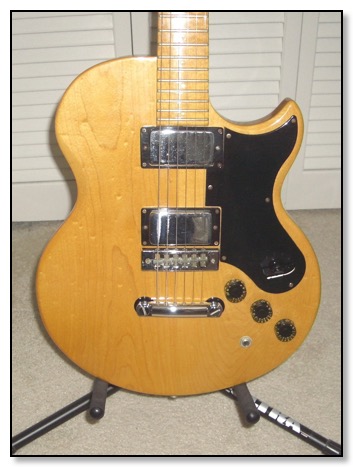15 November 2020
1974 Gibson L-6S Custom
11/15/2020 15:00



History
I purchased this guitar in late 1974 and it was pretty much my only electric for the next 30 years. I think it was the blonde neck on this guitar that appealed to me. You don't see many Gibsons with a maple neck and fingerboard. I've played this guy at so many rehearsals and gigs that much of the finish has worn off the back and sides of the neck. If you are really looking you might notice that the chicken head selector switch is not the original…it's larger which made it a little easier to use. I have reinstalled the original switch now that my L-6S has been semi-retired.
Specs
Over 12,000 L6-S Custom instruments were made. Each guitar is made out of a one-piece maple body and a three-piece set neck, with a choice of rosewood, maple or ebony fingerboard. Finishes included Natural Maple, Ebony, Silver Burst, Tobacco Sunburst and Cherry Sunburst. A Double Cutaway Model was also available in Ebony and Maple (used by Angus Young in 1975). Controls include a six position pickup selector, master volume, mid-range and treble roll-off controls. The pickups were sealed ceramic Bill Lawrence Humbuckers. At the time of its introduction, the L6-S Custom was simply called the L6-S, not gaining the "Custom" badge until later, when the simpler L6-S Deluxe was introduced. The L6-S and L6-S Custom are identical.
The L6-S Custom has a six way rotary selector switch, complete with "chicken head" pointer knob. Starting with switch position #1, in the most counter-clockwise position, the available pickup switching options are as follows:
- Both pickups, in series
- Neck pickup, alone
- Both pickups, in parallel
- Both pickups, parallel out of phase, with the neck pickup's bass response restricted through a series capacitor.
- Bridge pickup, alone
- Both pickups, series out of phase.
The capacitor in the #4 position gives a fuller tone than the otherwise very nasal out of phase tone. The capacitor serves to limit the low end response of the neck pickup, and also phase delays the signal from that pickup, resulting in a fuller tone, not too unlike the #2 and #4 switch positions on a Fender Stratocaster guitar.